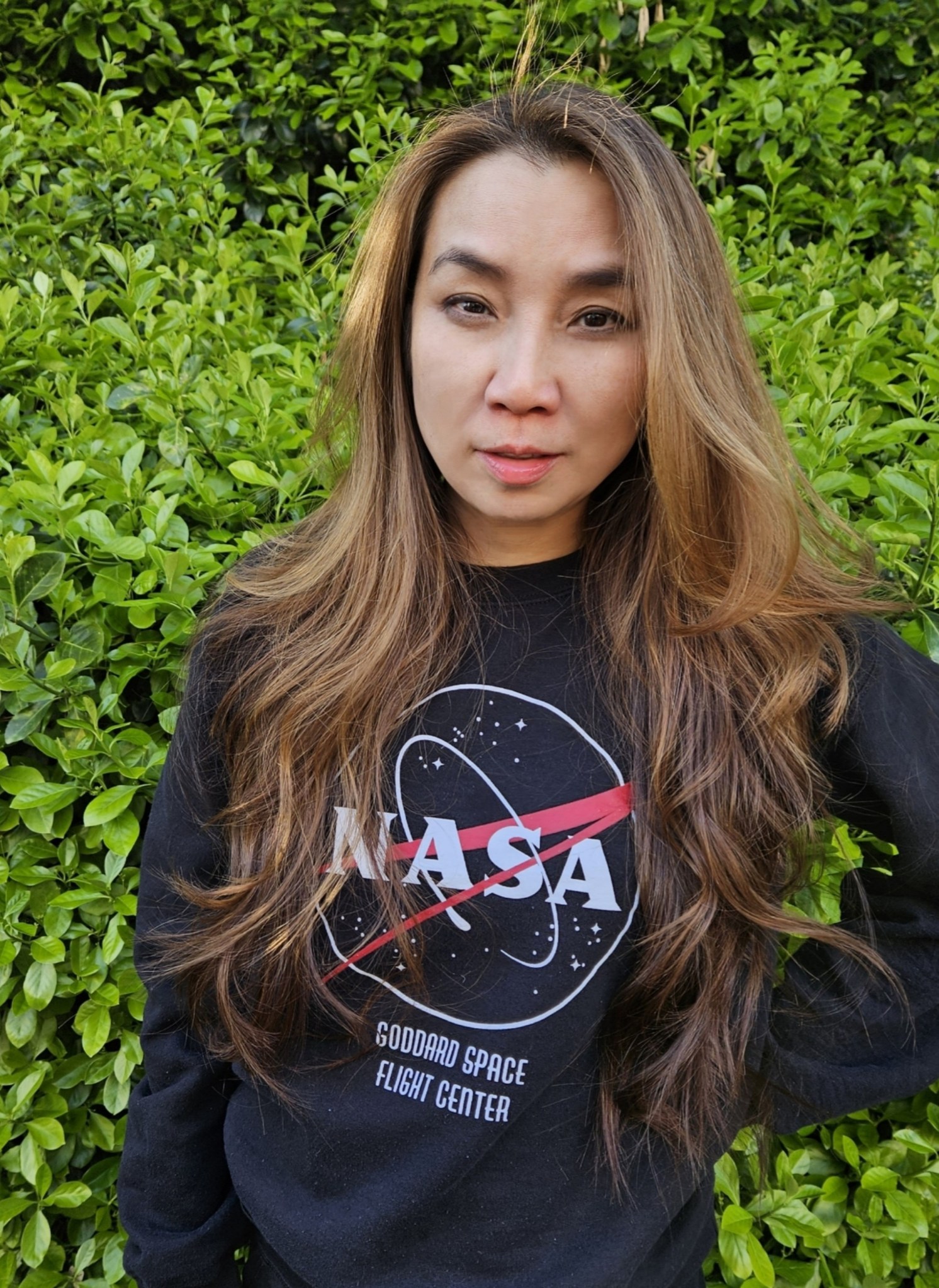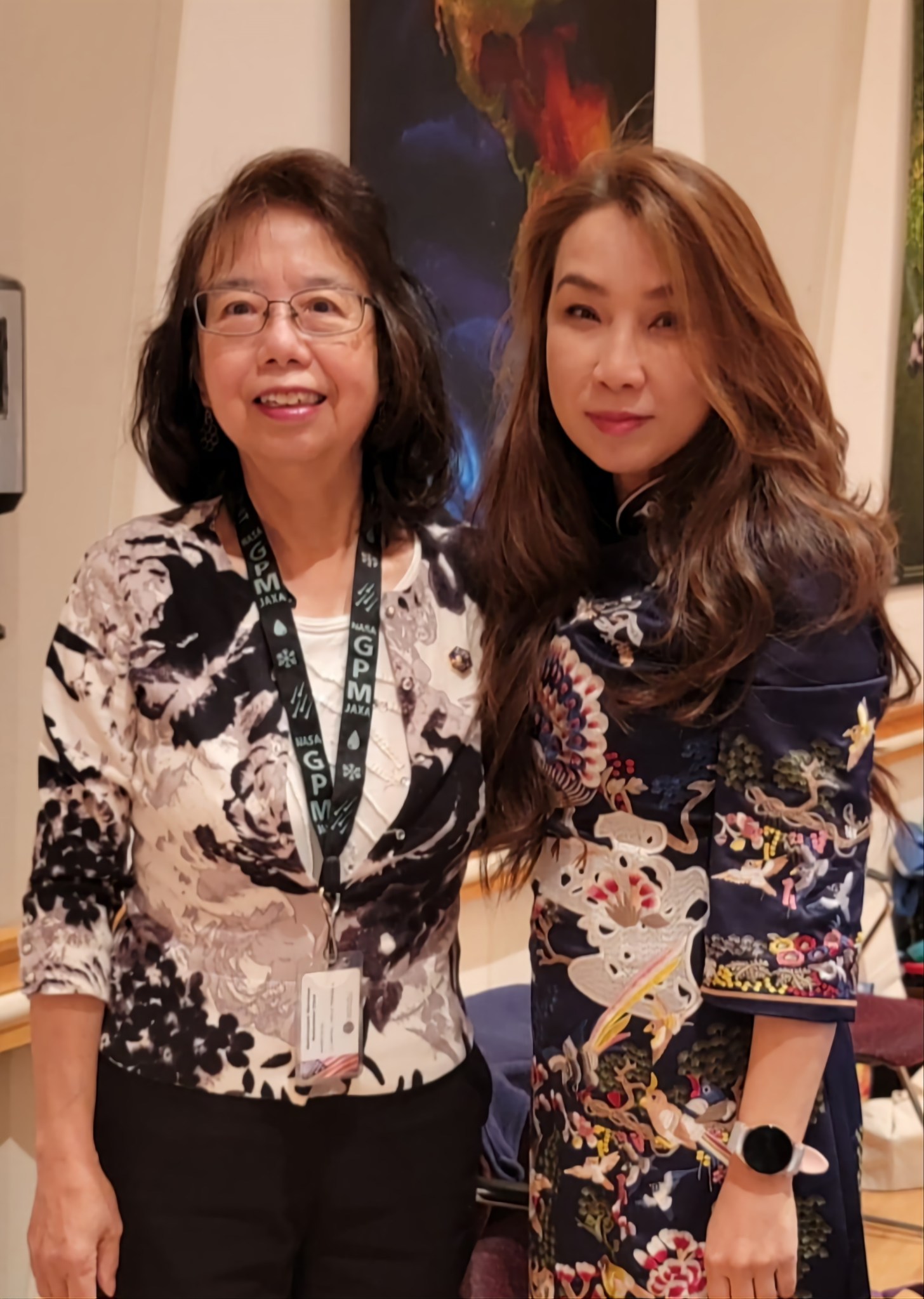Name: Xiaoyi Li
Title: Instrument Systems Engineer (ISE) of Venus Atmospheric Structure Investigation (VASI) for the Deep Atmosphere Venus Investigation of Noble gases, Chemistry, and Imaging (DAVINCI) and Deputy ISE of Comprehensive Auroral Precipitation Experiment (CAPE) instrument for the Geospace Dynamics Constellation (GDC) mission
Formal Job Classification: Instrument Systems Engineer
Organization: Instrument/Payload Systems Engineering Branch, Engineering Directorate (Code 592)

What do you do and what is most interesting about your role here at Goddard?
I have two roles. As the instrument systems engineer of VASI, I lead the technical team to develop a sensor suite for this component of NASA's upcoming DAVINCI mission to Venus. I am also the deputy instrument systems engineer of CAPE where I assist the lead for developing the CAPE instrument for the Geospace Dynamics Constellation mission. The most intriguing aspect of my job is to collaborate with two talented and diverse technical teams, learn from team members, and come up with solutions to resolve technical challenges within budget and schedule.
What is your educational background?
I received a bachelor's degree in mechanical engineering from Tongji University in Shanghai, China. I furthered my education at the University of New South Wales, Australia, where I earned a master's in mechanical engineering. After I moved to the U.S., I received a Ph.D. in mechanical engineering from the University of Central Florida in Orlando. My doctorate was funded by a NASA grant to design, build and test a spaceflight cryocooler.
Why did you become a mechanical engineer?
I grew up in an engineering family. My mother was a chemical engineer. My father was an architect and structural engineer. I grew up watching them build large factories. While I would like to think I would have become an engineer without their influence, growing up with such incredible role models gave me access to, and an understanding of engineering disciplines that I never really considered any other profession.
What brought you to Goddard?
Upon completing my Ph.D. in 2005, I started out as a mission analyst for launch service programs at NASA's Kennedy Space Center in Florida. In 2009, I began working as a thermal engineer for NASA's Wallops Flight Facility in Virginia. In 2010, I came across a position that brought me back to my Ph.D. days and I couldn't pass up the opportunity. I joined the Cryogenics and Fluids Branch at Goddard.
What did you do at Goddard before your current position?
I contributed to multiple engineering and science studies, proposals, and projects as a cryogenics engineer. Notably, I served as the principal investigator for two IRAD studies. One of the studies was submitted to the Patent Office and later was granted a new patent. Additionally, I was a co-inventor for another patent. Prior to joining my current group, I held the position of instrument cryogenics lead for the Roman Space Telescope. I served as the associate branch head in my current organization before devoting full time as an instrument systems engineer.
What are your main responsibilities as the instrument systems engineer for CAPE and VASI?
As the deputy instrument systems engineer for CAPE, my main responsibility is to assist the lead to coordinate multiple technical teams. The main focus is to work with the mechanical, electrical, thermal, structural, and other engineers to build electron/ion analyzers. For the VASI instrument, which has a smaller team, I take a more direct role in organizing and coordinating the technical work. This position allows me to engage in hands-on engineering tasks, which is extremely gratifying being able to get "my hands dirty."
My role involves not only managing technical tasks but also blending a variety of technical skills and personalities. Understanding of the technical connections between different components is essential to ensure the integrated systems meet requirements. In addition, helping to cultivate collaboration and synthesize diverse expertise is vital. I find the process of learning about and achieving integration of different personalities within the team particularly rewarding.
How do you coordinate between all the different systems and personalities?
My experience includes over eight years in leadership roles, supported by extensive training and a robust technical background. This includes a one-year detail assignment in Goddard's Science Mission Directorate. In this role, I facilitate collaboration within the engineering team, as well as between the engineers and the scientists to ensure that the instrument meets scientific objectives while adhering to well established engineering best practices and principles. Additionally, I empower our subject matter experts to pursue their innovative ideas while guiding them toward a unified direction through a shared vision. Although individual approaches may vary, we are all committed to the collective goal of a successful mission.
Who were your mentors and what did they advise?
I am grateful for the guidance of two mentors who have been instrumental in my development. Mr. Dave Everett, a systems engineer by trade and the current head of our branch, has been my technical mentor. He taught me, among many other things, the importance of understanding the overall system. Ms. Maria So, my leadership mentor, is a former senior executive service (SES) member at Goddard. As a fellow Chinese woman and engineer, her influence has been profound. She has guided me and acted as a sounding board for some very exciting but challenging decisions these past years. She also taught me the importance of seeing the bigger picture and the critical organizational leadership role to systems engineering, which has shaped my approach to leadership.
In turn, I apply these teachings and ideas when I informally mentor the younger engineers on my team. I encourage them to tackle problems independently by providing the necessary background knowledge and allowing them the autonomy to make decisions. I guide them when needed, but I believe in balance and the importance of learning through one's own mistakes.

What is your involvement with the Asian American Native Hawaiian and Pacific Islander Employee Resource Group (AANHPI)?
I have been actively involved with the group, and I recently served as co-chair for three years. Our group is dedicated to advocating for the wellness of the Asian American community within Goddard. Our group also addresses any concerns from the community members by reporting directly to Goddard senior management. In addition, we foster a sense of community and support among members through community events including our annual "Taste of Asia and the Pacific Islands" lunch event at Goddard.
What do you do for fun?
I enjoy cooking a variety of cuisines, including Chinese and Thai (which I learned in Australia), as well as classic American dishes. My favorite culinary challenge is a rib roast using suis vide method, which involves 18 hours of slow cooking before finishing it in the oven! Additionally, I enjoy playing video games with my family and friends, which is a great way to relax and connect.
By Elizabeth M. Jarrell
NASA's Goddard Space Flight Center, Greenbelt, Md.

Conversations With Goddard is a collection of Q&A profiles highlighting the breadth and depth of NASA's Goddard Space Flight Center's talented and diverse workforce. The Conversations have been published twice a month on average since May 2011. Read past editions on Goddard's "Our People" webpage.






